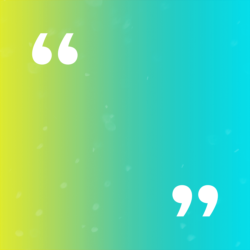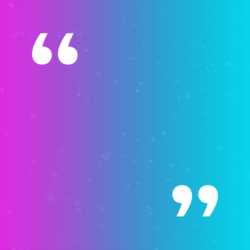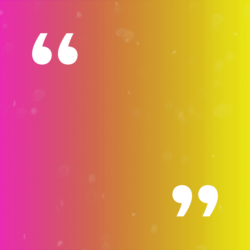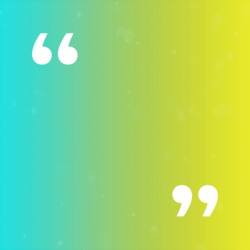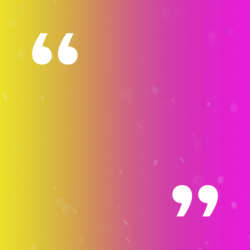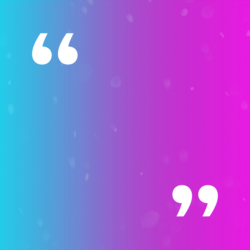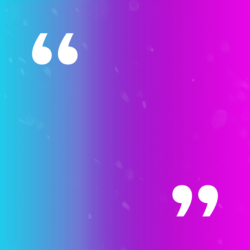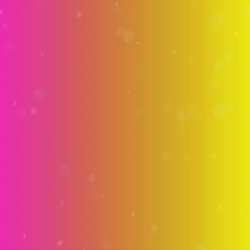
Summary
Our work indicates that Institutes of Higher Arts Education (IHAE) are often disconnected from their local communities.
This narrative investigates the relationships of Institutes of Higher Arts Education to their local communities.
We have collected positive examples of collaborations that connect Institutes of Higher Arts Education and local communities but also highlight common problems.
Specifically, this narrative discusses:
How Can Institutes of Higher Arts Education & Local Communities Grow Together?
- What Can Local Communities Gain?
- What Can Institutes of Higher Arts Education Gain?
- Problems & Challenges
- Pathways Into A Desirable Future
- Get Inspired From Example Projects
- Bibliography
The Initial Problem...
There is a perceived disconnection between Institutes of Higher Arts Education and society!

When we asked stakeholders in various fields about existing problems with Institutes of Higher Arts Education and the art sector, one common answer was the disconnection of art from society.
This perceived disconnection is rooted in complex dynamics. Among others, the problem seems to be entangled with the perceived inaccessibility and elitism of Institutes of Higher Arts Education, the art establishment itself, and international networks, industry cooperations, and reputations that are often more valued than connections to society.
The Solution...
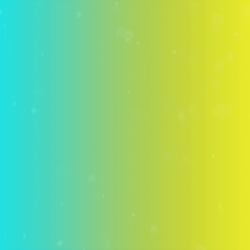
The most obvious way for Institutes of Higher Arts Education to engage with society is NOT through academic discourse or globalized activities...
… but it is through reaching out to their local communites!

What is meant when we talk about local communities?
The local communities of Institutes of Higher Arts Education are people with a shared identity or interest in the region where the art academy is located.
The Institutes of Higher Arts Education and its community thus have a shared geographical location, they are from the same “neighborhood”. The local community can be heterogeneous, i.e. consisting of different individuals from the same area (e.g. different ages, education, ethnic background, etc.). The group members have a common goal or a shared interest that leads them to engage or interact with each other. A local community can also consist of local people primarily coming together because of one shared identity aspect for example age or gender. A local community can, for example, be a group of people of the same age regularly meeting for gardening or working on creative projects. Another example is a group of neighbors coming together to improve the village square or beautify the school building.
How can we describe relationships between Institutes of Higher Arts Education and their local communities?

In the following, we present some thoughts from our interview partners in the FAST45 project that describe relationships between Institutes of Higher Arts Education and their local communities...
"One aspect for me is thinking beyond the walls of the institution. Meaning that part of the learning environment is actually in the real world around us.
This is why active opportunities to engage with communities and with society in different ways must be built into the studies. Because this is where we learn how we engage with the world around us as well, and we again start to create new ways of doing things and connect with the world around us from the beginning of our studies and as a natural part of the studies and not as something separate." (FAST45 Interview Partner)
"I guess that Estonian Academy of Arts could have a much bigger impact. It was much more visible until it lost its main building in the city center in 2010, it was like vanishing into those temporary locations then. But I'm not sure how much is visible now, although it has moved all of its departments together into its new building in 2019 – now it has somehow vanished into this hipster, gentrificated area in the Kalamaja neighborhood in Tallinn. I have a feeling that other disciplines seem to be more in the picture than Fine Arts, as society needs design and fashion etc. EKA’s MFA programme is also focused on galleries, not on public space, not on socially-politically engaged projects." (Flo Kasearu)
Flo Kasearu is an artist and co-founder of Naked Island art work production platform. Flo Kasearu was interviewed by the FAST45 Knowledge Alliance on the 11th of Mai 2021.
"I hate to use the word survive, but of course, I think collaboration is key for how music and the arts will survive. It's about integrating it into society and the community in every possible way or format." (Ankna Arockiam)
Ankna Arockiam is a PhD student at the Royal Conservatory of Scotland in Glasgow. She is founder of a south Asian women's singing group, and co-founder of the platform Shared Narratives. Ankna Arockiam was interviewed by the FAST45 Knowledge Alliance on the 29th of April 2021.
"I think one thing is that we will need to look outwards a lot more, that we will really need to find more ways of engaging with the world outside our walls, to look at how we connect with our local communities, how we connect with our global communities, how we engage in dialogue and collaboration.
This is really, at least from my perspective, the short and long-term major change that will need to take place.
Within an institution, it's easy to look inwards and get caught inside our own bubble. And to perpetuate again the same kind of cycles and the same kind of thinking. You have to be quite brave to do this and willing to jump into the deep end, into the unknown. And perhaps this is something that we will be more forced to do as well." (FAST45 Interview Partner)
"Things changed already. Nowadays interior architecture students have the possibility to participate in projects. For example, in collaboration with prisons or children’s houses. So they have different experiences and collaborate with different institutions outside of the art academy. As a fine art student, I only had one public space project, otherwise, all curricula were only happening inside the studio.
This one project we did that was outside in public space was an eye-opener for me. I realized that there is a way that I can have a dialogue with this real-life, happening outside. Somehow I got inspired by that. And from there, my interest in public space only grew more and more." (Flo Kasearu)
Flo Kasearu is an artist and co-founder of Naked Island art work production platform. Flo Kasearu was interviewed by the FAST45 Knowledge Alliance on the 11th of Mai 2021.
HOW CAN INSTITUTES OF HIGHER ARTS EDUCATION & LOCAL COMMUNITIES GROW TOGETHER?

There is a diverse range of possibilities for Institutes of Higher Arts Education to improve their relationships with their local communities.
We have collected various inspirations for how art academies can become more accessible to locals and how fruitful collaborations between Institutes of Higher Arts Education and local communities can develop.
Similar to Pollak et al. (2000), we differentiate between collaborations, which involve project-based or long-term collaboration with community members; and audiences, which refer to visitors at art university events from local communities. Both aspects are essential focal points within the relationship between Institutes of Higher Arts Education and local communities. However, it is important to differentiate between these two terms as they operate on different levels.
Possible Areas For Collaborations

Collaborations between Institutes of Higher Arts Education and local communities are necessary to improve the often neglected involvement of art academies with their social surroundings.
Such collaborations usually involve specific parts of the community - for example, schoolchildren, local minority groups, groups with special interests, or people living with special conditions, e.g. chronic illnesses - where both sides collaborate in the form of, for example, events, workshops or projects. A common method for successful collaborations is participatory design and co-creation, where community members become co-authors of artistic projects. Such participatory methodologies aim to highlight the voices of community members.
A further fruitful approach for Institutes of Higher Arts Education to establish closer relationships with locals can be the organization of or involvement in projects and events with social benefits for local communities.
We collected promising project ideas and examples, hopefully inspiring and supporting new collaborations and projects between art academies and their local communities.
Educational Projects in First & Secondary Schools


Early arts education is important for our society since it enables children to get in touch with arts and culture. Furthermore, it can also help Institutes of Higher Arts Education reach potential students who otherwise would not have much knowledge of Institutes of Higher Arts Education and the possibilities of artistic studies. Hence, the involvement of art representatives in schools can further strengthen the accessibility of Institutes of Higher Arts Education.
"We have various educational programs that I've been part of. I worked with a Scottish chamber orchestra. We did a project in a school in an area with a high multi-deprivation index, just out of Edinburgh. And we went to this school where music education is just one teacher for the entire school, and it's very limited. Some of these young people are just learning how to play the keyboard or sing, or there are brass instruments, but they don't have the necessary infrastructure or resources for them. Going into that space and working with these young people not only opened avenues for them, but it opened avenues for us as tutors or leaders in that program!
Because we were introduced to a part of the community that we wouldn't have been if we were just in a conservatoire sector where we only perform in big concert halls, which has become the true definition of success. But to step into the community and work with the community and to see the results and the fruits in real-time is something that we need to focus on way more than just big concert halls..." (Ankna Arockiam)
Ankna Arockiam is a PhD student at the Royal Conservatory of Scotland in Glasgow. She is the founder of a south Asian women's singing group, and co-founder of the platform Shared Narratives. Ankna Arockiam was interviewed by the FAST45 Knowledge Alliance on the 29th of April 2021.

Examples
One example of the cooperation between early arts education and Institutes of Higher Arts Education in rural areas is a project called "region 4.0" based in Germany. You can find more information on the region 4.0 project here
Another example of early arts education from the US is the Girl’s Garage project. Read more about Girl’s Garage here
Projects in Social Work


Art universities can also initiate projects related to social work and social contexts. These could, for example, arise from collaborations with local NGOs, prisons, hospitals, elderly care homes and many many more.
For these purposes, a transdisciplinary collaboration with social work faculties can be beneficial (Wehbi et al. 2016). Art students and teachers can benefit from the critical and theoretical perspectives within the social science of a socially engaged art project, while social work students and teachers can utilize artistic approaches as a catalyst for social change. Researchers from Canada proposed a course structure that integrates a collaboration of master students with arts and social work. Within this course, the students would critically discuss socially engaged art projects and embed them into a theoretical context. Only after this stage of exploration and reflection, would they develop a project proposal (ibid).

Furthermore, local communities potentially benefit from art academies' collaborations with local Non-Governmental Organisations (NGOs) as these projects usually focus on social dimensions in their respective region.
An example of such a collaboration is the MOME Movement in Budapest, Hungary. Read more information about the MOME Movement in Budapest here
Participatory Design & Co-Creation Of Arts


When applying participatory design and co-creation methods, artists and designers develop and co-create with individuals who will be directly affected by the results of the project. They become co-authors of the final outcome and work on one level with the experts. Their knowledge, experiences, and perspectives become a central part of the creation (Sanders and Stappers 2008).
Co-creation can also happen between artists and local communities (Cumbula et al. 2013). Methods of co-creation and participatory art can be implemented in various settings, e.g. designing a new outdoor space of a building in collaboration with the inhabitants, creating software together with end-users or creating an accessible health service together with immobile patients. Such an approach is valuable for the artistic work of students, as "ideas grow together based on needs, based on things that matter within those contexts" (Sean Gregory, April 23rd 2021). Participatory approaches and strong communication with local communities are also valuable components "to ensure that those voices are being brought into the conversation" and to reflect what messages "the artists are communicating through the artwork" (Silke Lange, May 4th 2021).
Co-creation can thus contribute to community well-being (Fancourt and Finn 2019, APPGAHW 2017, Wiseman and Brasher 2007) and community empowerment (Dogu et al., 2021, Johnson and Monney 2021).
"There's a growing focus on the idea of co-creation. Whether it's artists co-creating or programmers, producers, curators, co-creating with artists and institutions such as the Barbican with people in the community, with community neighborhoods. That is where ideas grow together based on needs, based on things that matter within those contexts. And out of that, that's where you start to develop new and exciting things that need to be taken as seriously as the beautifully curated art exhibition based on the famous artists or the great concerts or theatre pieces that we would know and expect to see in a certain way. So it's back to the working culture and the way that you develop new possibilities and new ways of engaging people." (Sean Gregory)
Sean Gregory is Vice-Principal and Director of Innovation and Engagement, for the Barbican and the Guildhall School in the UK. The FAST45 Knowledge Alliance interviewed Sean Gregory on the 23d of April 2021.

When Institutes of Higher Arts Education collaborate with a community using participatory approaches, it is crucial to reflect on the power dynamics within the participatory project (Webhi et al. 2016). This can for example include questioning the role of the expert.
NOTE
Co-creation practices also bear challenges and opportunities for misuse. For further readings on the critical analysis of co-creation we recommend Walmsley (2019)

Examples
One example of a co-creation project is the Design for Health and Wellbeing (DHW) Lab in Auckland (Reay et al. 2016). Read more about that project here
Another inspirational example took place in Olaszliszka, Hungary, where design students asked the kids of the local kindergarten how they wanted to play, and as a result, redesigned and rebuilt the playground incorporating the children’s wishes. Read more about this HELLO WOOD project
One Step Further: Multispecies Thinking & Biodesign


When exploring co-creation and community empowerment researchers of the Izmir University of Economics challenged the human-centred approach to co-creation. They suggest expanding the idea of co-creation not only between humans but between all living systems. This new perspective of approaching nature as a co-creator and co-designer raises environmental awareness within the creative process and empowers local communities on an ecological level. This approach is also discussed as “Biodesign” (Dogu et al. 2021).
Such multi-species approaches to co-creation can possibly lead to co-creation projects between Institutes of Higher Arts Education and local living organisms such as local plants or animals. The idea of the local community is thus expanded to the non-human.
Opening Up Institutes of Higher Arts Education to Its Local Communities...
How can art academies welcome local visitors?

Besides cooperative projects helping Institutes of Higher Arts Education and local communities grow together, art university buildings may serve as venues, event spaces, or open spaces for the whole local community. Furthermore, art universities can also stage events in their local area and thus become a community space instead of the disconnected art bubble it is often perceived as.
In the following, we have collected some examples of what such events can look like and how art schools succeed in welcoming local visitors into the arts education space.
Summer Schools & Events In Rural Areas


Art events can have a potentially revitalising effect on rural areas which suffer from factors such as depopulation, ageing populations and/or socio-economic decline. An example of this is ‘Shiosai’, a bottom-up community art festival, which has been taking place in the village of Mitarai, Japan since 2017. The festival has a highly revitalising effect on the area and contributed to the strengthening of the local community (Qu and Cheer 2021). Such art events have the potential to be supported or initiated by art academies in collaboration with local communities.

In 2020 in a rural, increasingly depopulated town in Estonia a summer school with 100 international architecture students was organised by EASA, the European Architecture Students Assembly. This event led to positive experiences being reported by both the local community as well as the students. Jiří Tintera, the town architect in this municipality, who is also a teacher at the university in Tallinn shares her reflections on the summer school:
"There have been students dancing and singing in the main square. They have been creating different installations in different parts of the town. They have been communicating with locals and this is what locals really want. Because the problem of long-time population shrinkage is that you get used to the fact that next year is even worse than the year before and that no one is here, everyone has left, society is focused on somewhere else, and you are unseen. If those different people from outside, from this big world, come here and they start to talk with you, they start to think about your every day – this is very important for locals. I observe that small towns, which are successful in holding their population are focusing on art in urban space. So the cultural sector has an impact on if people decide to stay." (Jiří Tintera)
Jiří Tintěra is an architect, municipality architect, and senior lecturer at Tallinn University of Technology. He was interviewed by the FAST45 Knowledge Alliance on the 27th of April 2021.
Campus Spaces As Communicators To Local Communities


The campus of the art university itself has the potential to serve as a space for creativity, festivals, and public exhibitions. As people come together in one space, networking and interaction take place naturally and this can even lead to the creation of new local communities. For example, new interest groups may form.
The spaces within Institutes of Higher Arts Education have the potential to become exploratory spaces of exchange - not only for students and teachers but also for other local community members. In this frame, Institutes of Higher Arts Education have also the possibility to communicate their identity to communities. This is an opportunity for art universities to highlight their image as open, educational, and creative spaces while countering the image of the Institutes of Higher Arts Education as elitist and inaccessible.
The university building and the university campus can also promote a community feeling within the local community itself. Festivals at those campuses are a way of reaching diverse audiences and creating feelings of connection and belonging, potentially forming new communities at these venues.
"I was studying computer science, but across the street from my university was a college of art and design. And I ended up hanging out there way more often than at my college. The people there were way more interesting. They had a lot more ideas and they were good at creating communities, around music events, art events, things like burning man, and local events like that. And for me, that was significant culturally. It was something that I wasn't getting out of my community of programmers at my university." (CJ Carr)
CJ Carr is an AI specialist, hacker, co-founder of Dadabots and metalhead. He is based in Boston and Sacramento, US. He was interviewed together with his colleague Zack Zukowksi by the FAST45 Knowledge Alliance on the 5th of Mai 2021.
"It is important that universities are more part of the general society. Universities have to reflect society more regarding access, quality, and diversity. Events for which the university campus is an actual venue are crucial so that there's a real mix of ordinary folk and university students. Good examples are the NUI Galway and the Galway Arts Festival or the Cork Opera House of UCC. Those are clearly meshing themselves. There's a lot of room for good links to be made there. Because if we're going to have a truly successful society, we all need to be successful. It can't just be when we've got a very good third-level sector or we've got quite a good art scene. I suppose we need to look at all areas of society and make sure that they're speaking to each other and working together well." (FAST45 Interview Partner)
Exhibitions in Public Spaces


Art in public spaces has specific qualities, which often cannot be achieved in the context of a gallery or an art institution - particularly the benefit of engaging citizens, and achieving high levels of accessibility (Deutsche 1998), the revitalization of abandoned public spaces, and the strengthening of the local economy (Seifert and Stern 2005).
As an inspiration for art schools, read more about a transnational, public art project here
Another inspirational project is the Laundromat Project from the early 90s in Brooklyn, US. It started a movement where art was placed in local laundry shops, in order to engage the community with art. Read more about the Laundromat Project here
WHY ARE RELATIONSHIPS WITH LOCAL COMMUNITIES RELEVANT FOR THE FUTURES OF ART EDUCATION?
Benefits of Collaborations...


Both Institutes of Higher Arts Education and local communities can profit from collaborations. Future art universities should think of themselves as parts of local communities, which collaborate with other actors of the same network with goals for mutual benefit. This approach to formulating art universities' identities has the potential to bridge the gap between Institutes of Higher Arts Education and local communities.
How Can Art Universities Enhance Community Well-Being?
What is community well-being and how is it connected to the arts?


Community well-being is broadly defined as "the combination of social, economic, environmental, cultural, and political conditions identified by individuals and their communities as essential for them to flourish and fulfil their potential" (Wiseman and Brasher 2008, 358).
By this definition, community well-being can be linked to the arts. Why? While outcomes of artistic processes are open-ended and cannot be reduced to predicted benefits, studies have shown that art has the power to enhance health and well-being on the individual and the community level. This includes i.a. health prevention, mental health, belonging, economic well-being (Fancourt and Finn 2019) and resilience (Qu and Cheer 2021).
Outlined below are the most prominent results of arts and community engagement.
Improving Mental Health

Interestingly enough, a survey conducted in the UK has found that people who reported depression and intense emotional loneliness would be more likely to engage with the arts. This indicates that art is often used as a medium for emotional regulation and soothing (Tymoszuk et al. 2021). Furthermore, art in community contexts can encourage and support interpersonal relationships where people increase confidence in each other, in themselves and groups and thus develop a sense of belonging to the community. This can contribute to the decrease of social isolation, facilitate social action and thus contribute to personal and community well-being (Johnson and Monney 2021, Fancourt and Finn 2019, Birchall et al. 2018, APPGAHW 2017).
Bridging Communities

Moreover, art practices in communities have the power to bridge existing gaps within communities and enhance integration and connection. Examples for (re-)creating such connections range from integrating people with dementia (Skinner et al. 2018, find an inspiring example here) into the community to connecting different generations (Anderson et al. 2016, find an example project here), community members with and without disabilities (Smart et al. 2018, find an example project here, Spiegel et al. 2015, read more about another project here) or police officers and community (Smigelsky 2016, find an example here).
Fostering Inclusivity

The arts thus potentially have a strong impact on the community level as they have the power to strengthen the social fabric of a community. For example, the arts can serve communities as they "connect people and build interrelationships among our creative fires and imaginations outward through race, class, and gender” (Scher 2007, 5). This can foster tolerance and empathy and "open boundaries among cultures, [...] disciplines, generations, and faiths" (ibid., see also Johnson and Monney 2021). Community art projects thus can actively contribute to challenging discrimination in communities (Wiseman and Brasher 2007, 3, Scher 2007, 5). Community arts can further increase agency for all people of the community and especially those otherwise subject to social exclusion and “can positively affect health and wellbeing because they can enable individuals and groups of people to develop narratives of action in response to social change” (Mulligan et al. 2008, 50) in a complex, globalized world.
Defining Community Arts Practices


Engaging with the arts within communities and the benefits of these practices are discussed with the use of different terminologies, for example, "community arts," "socially-engaged art," "community-based art initiatives," "participatory arts-based research,” and "art activism". Although the terminologies set varying foci "they share in common a desire to work collaboratively, creatively and artistically with communities in order to explore, communicate and address issues that are important to members of these communities, and a belief that the collaborative art-making process is at least as important as the 'products' created" (Johnson and Monney 2021).

How Can Institutes of Higher Arts Education Contribute?

Institutes of Higher Arts Education surrounded by and as part of local communities can contribute to the well-being of local communities by opening up to the community and rethinking their identity. Aren’t Institutes of Higher Arts Education a part of local communities? In identifying as part of these communities the collaboration with other parts of the community appears more natural.
Collaborative projects aiming for creating art together can be one of the multiple ways for Institutes of Higher Arts Education to enhance community well-being - an example of this is the project described below.
The project Lata 65 brings together locals over 65 years old with the most respected urban artists, offering graffiti workshops for senior citizens. Its mission is to democratize contemporary art, bring colours to neglected neighbourhoods, and create a bridge between generations. Read more about this inspiring project here
Initiating Social Change through the Arts


Community art has the power to initiate social change through participatory and co-creative practices.
Through these artistic processes, new perspectives and visions can arise and can be communicated through emotions and intellect alike. This can help people become more thoughtful, open to change, and create new respectful relationships across differences. In this case, art is not a product, but a way of thinking and creating meaning within a community. Insights from a group of community activists and educators show that community art can help create safe spaces where one can find trust and embrace processes of change. Furthermore, it offers the opportunity to slow down, reflect, record the past and envision and shape the future as well as to experience appreciation, healing, and empowerment (Scher, 2007).
"You can use arts to communicate those issues. You can communicate to different audiences, you can address or raise issues through the artwork, or you can work differently with communities. I touched earlier on participatory art or participative practice and how you facilitate the communication with the communities, to ensure that those voices are being brought into the conversation, for example, and what message the artists are communicating through the artwork." (Silke Lange)
Silke Lange is an Associate Dean for Learning, Teaching, and Enhancement at the University of the Arts, London and was interviewed by the FAST45 Knowledge Alliance on the 4th of May 2021.

Artistic input within collaborations with local communities can encourage public discourse on local developments, unrecognized cultural topics, and social aspects. These participatory and co-produced approaches can give a voice to unnoticed and disadvantaged minorities and use the public space to discuss local issues. In this context, historian and art critic Rosalyn Deutsche (1996) distinguishes the audience from the public, where the latter emerges only when citizens participate in the political discussion. “Art that is ‘public’ participates in, or creates, a political space and is itself a space where we assume political identities” (ibid., 289). Furthermore, current research by architect Miodrag Mitrašinović and colleagues (2021) shows that places of “healing and communal coming together” can be created, building the skills and resources of local communities “in order to enable the appropriation of public space for economic sustenance and cultural growth” (ibid.).
An impressive example of artistic intervention in public space is the project Facade Dialogs by the art collective Xenorama. Read more about this inspiring art intervention here
Strengthening Accessibility of Arts and Culture


Moreover, stakeholders interviewed by the FAST45 project recognise an ongoing and futures-oriented discourse around the accessibility of the arts and within artistic spaces or institutions. They highlight that increasing the accessibility of the art sector is an urgent requirement and a growing trend. People do want to connect to arts and culture!
Consequently, art schools need to reevaluate arts educational practices and teaching content in order to equip future artists with skills that "enable them to connect with communities and diverse kinds of situations in society." This includes integrating "particular pedagogical skills into the training of artists" as one FAST45 interviewee highlights. These skills and experiences support students in creating and exhibiting their art in an accessible and inclusive way. If these approaches become common among art school graduates, this might improve the accessibility of art in culture on a larger scale as well.
"It may be connected to asking: How can we take the arts into the contexts and settings and make what we do more accessible? - It means looking for opportunities to perform in new situations, getting out of concert halls and into community settings. Whatever the art form is, how might it be taken into new contexts and made more inclusive and accessible? And tied with this is, of course, the education of artists and equipping future artists with these skills that prepare them not only for being a performer on a stage or visual artists in an exhibition space but to ask: How can artists utilize their artistic thinking and their artistic skills to connect with communities and diverse kinds of situations in society? All of this needs to be built into the training of artists in the future." (FAST45 Interview Partner)
Recognising Local Needs For A Sustainable Future


The FAST45 interview partner Jiří Tintěra shares some of his experiences with different local architectural needs in the capital of Estonia, Tallinn and the Estonian town of Valga, far away from Tallinn on the border to Latvia. Here Jiří Tintěra involves architecture students because he sees benefits for the community of Valga and also in terms of education and practical experience for the students.
"I feel that we are now missing those architects who are focusing not on design, but strategy-thinking, on architectural policy, on work in local governments. I see how important it is in fact that local governments have an architect who can somehow hold all those developments together, that this urban space would improve all the time. There is a necessity that this local architect can explain to politicians and local people what is important and what is not. That is something different from the design works." (Jiří Tintěra)
Jiří Tintěra is an architect, municipality architect, and senior lecturer at Tallinn University of Technology. He was interviewed by the FAST45 Knowledge Alliance on the 27th of April 2021.

Specific areas have specific needs regarding architecture and living standards including sustainable living. Thus what architecture proves sustainable may differ locally as in the case of Valga. The architects in this town need to be sensitive to the specific local needs and complexities and to develop new ideas on how to approach these needs instead of just building new houses:
"I came to the town of Valga eight years ago, for the first time. I had been working so far mainly with new houses. In Valga it is the opposite – here we have much more houses than we need in fact, so there is no reason to build more. We need to use those existing houses. That requires much less new energy because the houses are already built and you don't need to produce new materials. But those existing houses will never meet the energy requirements. There is also this important layer of old houses, which are so valuable that they are under heritage protection. In fact, in Valga, it could be possible to protect even more buildings. So I feel that the role of architects is to understand the possibilities of old valuable houses, to not want to build only new houses, to change the houses so that they offer this living standard, what people are now expecting. That is a huge topic and it’s quite underestimated in the education system we have now." (Jiří Tintěra)
Jiří Tintěra is an architect, municipality architect, and senior lecturer at Tallinn University of Technology. He was interviewed by the FAST45 Knowledge Alliance on the 27th of April 2021.
"Another impact is that those future architects must get used to these different perspectives, to these areas which don't need more buildings, because even what has already been built is too big. Commonly we are teaching architects to deliver new houses, new urban spaces, to be part of this linear growth. But for the future architects should be able to think about this second half of the development." (Jiří Tintěra)
Jiří Tintěra is an architect, municipality architect, and senior lecturer at Tallinn University of Technology. He was interviewed by the FAST45 Knowledge Alliance on the 27th of April 2021.

In Olaszliszka, Hungary, the HELLO WOOD architecture studio carried out a project, which consisted of building a bridge for pedestrians and as a result, upgrading the everyday life of locals. It was also a great design and construction exercise for design students who contributed. Read more about this interesting project
Contributing to the Local Economy


In towns or rural areas suffering from depopulation, institutes of higher arts education can be a factor, which pulls younger generations into the area - particularly art students, who move to the universities’ surroundings for their studies and ideally stay after graduation. This can contribute to the regeneration of a population. Art student graduates can also aid economic growth by creating new employment possibilities or attractive spaces for economical possibilities.
"I do believe that local authorities may better acknowledge the value of artists and art students. Because at the moment, the power of vitality, young people, and diversity, in general, to attract people to municipalities, thinking of pull factors, vitality factors, retentive factors, many local authorities have come much further in that respect. I see plenty of opportunities for more and more municipal decision-makers to realize that 'Hey, it is actually in our interest to attract artists and art students into our municipality. That is a better place to live with all those people buzzing themselves here.'" (FAST45 Interview Partner)
HOW CAN LOCALS HELP ART SCHOOLS?
Why is the Relationship between Local Communities & Institutes of Higher Arts Education Relevant For Their Futures?
Broaden Employment Possibilities in Alternative Sectors


Collaborations with local communities can open up new perspectives for the students as they gain insights into alternative sectors and work or cooperations with their surrounding communities and public spaces. Such collaborations may lead students to redefine their ideas of success within future employment and change their future plans. Ankna Arockiam, a PhD student at the Royal Conservatory of Scotland in Glasgow suggests in the following quote:
"Oftentimes - in thinking about what they can do for society - music and the performing arts separate themselves from society. But actually, we are part of society.
And I think for students it is important to understand that they are citizens that are going to be stepping out after their education into the world. They will be part of society. They are already part of society! I think that realization alone would have an impact on how people think when they're studying. And I think that is also something that educational establishments need to reflect on music in society: What does that mean? It does not mean only concerts in concert halls, it does not mean opera in opera houses. So according to me parts of the conservatoire are slightly outdated now. I think we have evolved. Doing community projects should not be a side thing or not only something to get funding. It should be drawn into the main. This would change students' perception of success after graduating from a music institution once they see that actually success is not being the first violinist in the national orchestra, but success is me feeling great about doing this community project and the school, or working in this care home. And I think the old definition of success needs to be destroyed. So these avenues need to open because until that doesn't happen, we're still going to live in a very outdated kind of field that is not very relevant. After all, we are not making it relevant. But orchestras and operas are relevant to society." (Ankna Arockiam)
Ankna Arockiam is a PhD student at the Royal Conservatory of Scotland in Glasgow. She is the founder of a south Asian women's singing group, and co-founder of the platform Shared Narratives. Ankna Arockiam was interviewed by the FAST45 Knowledge Alliance on the 29th of April 2021.

Artists and designers in alternative sectors are of growing importance. More and more art university graduates enter into dialogue with politicians and/or the public sector. Creative skills and transdisciplinary collaboration are relevant in combating the challenges of the future. We will not resolve issues like climate change with old ways of thinking. The future needs openness and creativity! Artists bring both aspects into transdisciplinary teams (Hale and Woronkowicz 2021). While artists are already equipped with creativity, there are additional skills and practical experiences that may enhance artists’ future work in the public sector. Such skill sets can be acquired and facilitated when students work on community projects during their studies.
On the topic of art (schools) and sustainability read the FAST45 narrative The Arts and a Cultural Change Towards Sustainability
"I feel myself in the between of art, urban planning, science; in between the theoretical environment of the university, this practical work in the local municipality and the teaching of future architects. I feel this triangle is functioning really well. A lot of my students are doing their MA thesis on the topic which came from Valga, so I can bring their competence and time to Valga and use it there. At the same time, my students are getting a different perspective from Valga. I would have never finished my doctoral studies if I would not have had this Valga experience and this practical side of things." (Jiří Tintěra)
Jiří Tintěra is an architect, municipality architect, and senior lecturer at Tallinn University of Technology. He was interviewed by the FAST45 Knowledge Alliance on the 27th of April 2021.
"I am especially optimistic because we experience that the participants in our master course Design Thinking in the public domain are very open to innovation. This reinforces my conviction that cooperation with government organizations is increasingly becoming an interesting and, above all, relevant market area for designers and design thinking." (Hans Robertus)
Hans Robertus is a design thinking expert. The FAST45 Knowledge Alliance interviewed Robertus on the 4th of Mai 2021.
"A personal example is that I have a hard time working together with people, who haven't worked as volunteers. And an advanced collaboration would be very hard with anyone who hasn't done any creative work in their life. But that is very common in the public sector, many people never had that experience, either working as a volunteer within a community, doing something pro bono, or doing some creative work." (Marten Kaevats)
Marten Kaevats is an architect, urban planner, and community activist, at the time of the interview he worked as Estonia's National Digital Advisor. The FAST45 Knowledge Alliance interviewed Marten Kaevats on the 7th of May 2021.

One example of designers cooperating with the public sector is the Estonian Public Sector Innovation Team. One of their projects is focused on designing a better mental health environment for schools. The interdisciplinary team consists of public sector representatives from different ministries, graphic designers, government agencies and design student interns. Our stakeholder Daniel Kotsjuba participates in the project as a graphic designer:
"At the moment I'm working with public sector representatives on how to design a better mental health environment in schools. In the near future, I would like to see the things we're pondering about being implemented. I guess this is something that I wish for, that the work that we're doing every day is going to be implemented. And we are fortunate that quite many of the solutions that we come up with are being implemented. This is the satisfaction I want to get." (Daniel Kotsjuba)
Daniel Kotsjuba is a graphic designer working as part of the Estonian Public Sector Innovation Team. He was interviewed by the FAST45 Knowledge Alliance on the 23rd of April 2021.

The skills of artists and designers are becoming more relevant to the public sector. Kotsjuba sees the need for IHAE to better implement those new skill sets in the curriculum:
"As we expect public servants to be open to our approach, we need to be open to the public sector also as designers and try to understand what their situation is as well. It has to be likewise. What would help designers to enter the public sector is the ability or willingness to work with teams that are not designers, the ability to lead people. That takes a lot of empathy, and it takes a lot of patience. Design faculties could initiate sub-curricula about those skillsets. It could be a branch where you are trying to design with these people together, sort of a co-design. Also, what is the Public Sector in more general terms, what are the processes within and what are the opportunities to have an impact. Additionally, the ability to know about scientific research beforehand, how to conduct research, what's the common ground, what are the differences between scientific and Design research, etc. So being more aware of these aspects and knowing how to put them into practice." (Daniel Kotsjuba)
Daniel Kotsjuba is a graphic designer working as part of the Estonian Public Sector Innovation Team. He was interviewed by the FAST45 Knowledge Alliance on the 23rd of April 2021.
How Can Collaborations With Local Communities in Educational Practices Help to Enhance Students’ Skill Sets?


Working on community-relevant projects
Building awareness
Curating empathy
Promoting openness towards new, diverse situations and communities
Becoming aware of local needs and developing communication with people, who are not in the arts, e.g. local municipalities
Teaching strategic thinking
Connecting students to their roots and local traditions
Transdisciplinary communication and project work
Immersion into new, unfamiliar contexts
Training critical and out-of-the-box thinking
Delving into more practical work
Serving as an intermediary and connector
Sharing insights into the collaborative process
Knowledge Exchange & Mutual Support


Integrating local cultures and knowledges into the activities and curriculum of art university through workshops, teaching and projects builds connections between Institutes of Higher Arts Education and the world’s needs and perspectives. This can be highly inspirational to students, teachers, and processes and help art universities to bridge the often perceived gap between the arts and society. Filling that gap provides Institutes of Higher Arts Education and their students with the opportunity to become part of communities and to have a bigger impact on society. Community-based art education can also help to bring new knowledge into an art university, which is unique to specific communities and not recognised within the institutions themselves (Ulbricht 2005). Exploring artistic teaching practices from various cultures and different backgrounds allows for the expansion of art education beyond formally recognised academia. One example is a project, where art educators from Northern Illinois University collaborated with members of a local Latino community in order to create an Aztec-inspired mural (Staikidis et al. 2009). Sounds interesting? - Read more about the project here
WHAT IS WRONG NOW?
Problems & Challenges...


In the context of Institutes of Higher Arts Education currently, partnerships with local communities are often less supported than for instance partnerships with creative industries. Besides this prioritisation, there are various other factors that lead to a lack of collaboration between Institutes of Higher Arts Education and their local communities. In the worst case, this results in a feeling of disconnection between both sides. A desirable future for Institutes of Higher Arts Education and the role of art in society involves addressing these issues in order to establish spaces for fruitful collaborations and new experiences on both sides.
Need for Support from Local Authorities


In regions suffering from the consequences of depopulation, ageing and/or socio-economic decline, universities can help regenerate a city as a pull factor for younger generations and creatives. For this to be successful, it is of importance to create attractive employment possibilities in the region for graduates. Otherwise, it is only a short-term measurement as students will leave once they have completed their studies. Development and growth of the cultural and creative sector proved to have a revitalisation effect on surrounding areas in general. Once the process starts it allows for the possibility of more job opportunities for people and businesses to become attracted to the area (Lhermitte et al. 2015).
But - as FAST45 stakeholders emphasise - the establishment of a strong creative and cultural sector with job opportunities that encourage people to stay also needs sustainable support from local authorities. Otherwise, promising approaches are likely to not survive in the long run.
The Challenge of Finding the Balance between the Local & the Global


In higher education a clear trend towards internationalisation implying high mobility of teaching personnel, students and researchers have been observed. For Instituted of Higher Arts Educcation international collaborations and exchange is of high importance, for example, in terms of reputation and funding (Wihlborg and Robson 2018). While it can be an enriching factor to bring international people and topics into the local region, the orientation towards the global also has the potential to challenge the local integration of Institutes of Higher Arts Education.
For example, the integration of international students into the local (campus) community can be challenging and requires management and responsibility by local university actors such as student associations, faculty members, housing and university services (Van Mol 2019).
Nicolas Standaert, a professor of Sinology and expert in lifelong learning at Katholieke Universiteit Leuven, underlines that it is important to find a balance between the local and the global involvement of Institutes of Higher Arts Education:
"As a university, we move more in the international direction. I do not consider this a problem, because I live in an international community where we only speak English, and I work in a Department where we are very international.
Still, we haven't seen all consequences of this move, especially regarding the balance between international orientation and local embedding. For instance, it is very nice to have scholars from outside coming to teach here, but they are often less locally involved. They are not acquainted with debates among local scholars in the media, and that's linked to locality in which they are ultimately embedded. Their heart is often in their country of origin, where they spent all their holidays. We haven't discovered what it means the good balance to be embedded in a certain place and to be international. But the tendency is clear and we can only welcome that." (Nicolas Standaert)
Nicolas Standaert is a Professor of Sinology and an expert in lifelong learning at Katholieke Universiteit Leuven. Nicolas Standaert spoke to the FAST45 Knowledge Alliance on the 7th of Mai 2021.
Lack Of Funding & Resources


Establishing collaborations and enhancing the accessibility of art academies needs funding. For art faculties, cultural policies are an important step toward funding. The dean of the Fine Arts Faculty of the Basque Country Arantza Lauzirika is actively seeking to establish a working group to develop a cultural policy within the university. But she faces challenges:
"As the Dean of the Fine Arts faculty, my problem stems from the fact that I have to continually defend the professionalism of art, artists, art research, and so on, as well as the vindication that there has to be a cultural policy within the Basque Public University." (Arantza Lauzirika)
Arantza Lauzirika is dean of the Faculty of Fine Arts at the University of the Basque Country and was interviewed by the FAST45 Knowledge Alliance on the 30th of April 2021.

Power Dynamics & Artists’ Ego


When an Institutes of Higher Arts Education establishes collaborative projects with communities, the impact of the projects depends on critical and reflective concepts and methods of execution - especially when working together with marginalized communities. In discussions with FAST45 stakeholders, the need to establish a cultural policy discussing ethical questions of arts in Institutes of Higher Arts Education in collaboration with the community was identified to be of high importance.
Participation and Co-Design aim to mitigate the risk of superficial collaborations. Nonetheless, participatory methods are subject to power dynamics between artists and participants. These power relations can “shape the nature of the project in ways that gloss over social problems and paint (at times literally) a harmonious image of community life as opposed to highlighting social problems and addressing their causes” (Webhi et al. 2016). Teachers and other practitioners, who apply participatory approaches need to be aware of power dynamics, make them a topic and in advance of a project should consider who they choose to be participants, as this decision itself can shape such specific dynamics of exchange.
Likewise, the artists involved in community projects should be aware of their position and critically question their own methods. Furthermore, the desire for status and recognition as well as the recurrent assumption that only artists are capable of creativity within a community can potentially paralyze the abilities of all project participants (Scher, 2007).
"Once you enter another domain, in the spirit of 'watch out, here we come' and turn up at somebody else’s place of work, you must retain a degree of humility and mutual respect. I would be very cautious of not coming out with arrogance, claiming that artists would have some superior ability to solve problems, which others should accept like this pearl handed down to them. It is more about acting as part of society, being ready to listen to the opinions of others, and working as a member of multi-professional teams. Those I see as useful competence in the future." (FAST45 Interview Partner)

To mitigate those risks, artists and art schools who are working with a community should be aware that they are not superior. Moreover, they should not patronize community members but develop a non-hierarchical exchange based on mutual consent. It is important to be aware of the impacts that specific modes of exchange may have on both sides (Arenyeka 2018).
"To me, all these kinds of practices that consist of taking a star artist to a place to make an intervention, which is going to be the umpteenth, almost the same as the previous ones and which doesn't solve anything for the people in the local context, but which looks very good in pictures, seems worthless. I do believe that artists have to be aware of what their contribution can really be in a certain context and who ultimately benefits from it." (Arantza Lauzirika)
Arantza Lauzirika is dean of the Faculty of Fine Arts at the University of the Basque Country and was interviewed by the FAST45 Knowledge Alliance on the 30th of April 2021.
What Holds Community Members Back From Engaging With Institutes of Higher Arts Education?


Building Structures & Architectures of Institutes of Higher Arts Education
The building of the art institution itself can have potentially delimiting effects on the accessibility of Institutes of Higher Arts Education for local community members.
For example, a special and uniquely designed building might appear intimidating or not welcoming to the local community. In the same way, a strikingly beautiful building can separate Institutes of Higher Arts Education members and artists from their surroundings, since the building’s facilities may limit the need for external exploration and even create a sense of superiority.
"On the one hand, our university has an incredibly fortunate situation in terms of fantastic spaces and resources to work with. On the other hand, the space itself can also have the opposite effect, thinking from my perspective as a musician. The spaces we work in are often small soundproof boxes that are separated. So, the chances of actually meeting others or engaging with others are reduced in this setting.
And because the building is so nice and it's so pleasant to be there, it's also difficult to drag yourself out of that room and get out into the world. The physical space we work in can act as a barrier to the world around us." (FAST45 Interview Partner)
"In our city centre, we have a concert hall and event centre that is meant to be open to everyone. Is a wonderful building. But I think there are still areas of our society, members of our community, who feel like the building is not for them. Even to the point where they're not welcome there. That creates a border and barrier, which goes against what we're talking about now in terms of art students being connected to the world around them from the beginning and having that thinking built into the education. So, I think part of that is getting into different spaces and artists working in different spaces and not only staying in these kinds of special buildings. That is an important actual physical thing, that we get out into different spaces" (FAST45 Interview Partner).

What About the Participation Gap?
Access to the arts is not equal among all groups in society. Disprivileged groups in particular often have a more limited access to the arts, even though they would potentially profit the most in terms of well-being. While this is already a severe problem, some even observe a trend toward a growing participation gap. This is apparent in the trend of social facilities such as public libraries becoming dismantled (Neelands et al., 2015). Furthermore, there is a common general assumption “that the poorest in society are significantly less likely to engage with the arts than the wealthy'' (Johnson and Monney 2021). This potentially leads to the expectation that communities from economically weaker regions will be less interested in the arts and thus also less willing to cooperate with Institutes of Higher Arts Education.
A recent study draws a more complex picture of the problem. A qualitative investigation in form of arts-based, participatory research conducted by Johnson and Monney (2021) found that identifiable barriers such as long-distance travel costs, entry fees, illness, the mental capacity required for engagement, and the presumption that the (high) arts are designated only for wealthier social groups, holds people back from engaging with the arts. Once these barriers are bridged there is a high chance that people will become more interested and engaged.
An example of a community-university research partnership is the one established between the Hangleton & Knoll Project and the University of Brighton, UK. The partnership applies collaborative poetics as a participatory art method. The project "demonstrate[s] the enormous potential that can be unlocked when universities and local communities collaborate creatively as equal partners'' and "suggest[s] that interest and engagement with the arts amongst economically-deprived communities may be much greater than is often reported" (ibid). Read more about the collaboration here
WHAT CAN INSTITUTES OF HIGHER ARTS EDUCATION DO?
Pathways...
Identifying As Part Of The Local Community


The first step to bridging the perceived gap between Institutes of Higher Arts Education and society for Institutes of Higher Arts Education is to identify themselves as part of the local community. This leads art schools to realise that they benefit from the well-being of the community as well since their students, teachers, and staff are a part of it.
This step may seem obvious, but if it is not considered, any community collaboration will stem from a disconnected position - one that may even be degrading to the local.
"Oftentimes, music and the performing arts separate themselves from society in thinking about what they can do for society. But actually, we are part of society. And I think for students to understand that they are citizens that are going to be stepping out after their education, they will be part of the society. They are part of society. And I think just that realization alone would make an impact on how people think when they're studying." (Ankna Arockiam)
Ankna Arockiam is a PhD student at the Royal Conservatory of Scotland in Glasgow. She is the founder of a south Asian women's singing group, and co-founder of the platform Shared Narratives. Ankna Arockiam was interviewed by the FAST45 Knowledge Alliance on the 29th of April 2021.
Funding & Resources


Funding and resources are important aspects to consider when thinking about community projects. One positive example is the Transfer Department at KONRAD WOLF University in Babelsberg, Germany, which is well funded and supported and hence inspires and motivates teachers and staff to get active:
"Regarding the societal impact of the arts, at least in Germany, what we call 'Transfer' or 'Third Mission' is increasingly important. 'Transfer' describes activities with which the university transfers its research, topics, thoughts, content, products, etc. to the economy but also into society. That is a tremendously relevant task and purpose of our university. We have a transfer office dedicated to these activities and many of our teachers and staff are directly involved in projects that transfer something into society and the economy." (Susanne Stürmer)
Susanne Stürmer is the president of Film University Babelsberg KONRAD WOLF in Germany. She was interviewed by the FAST45 Knowledge Alliance on the 14th of April 2021.
Integrate Community Collaborations into the Art School Culture


FAST45 stakeholders have discussed how community projects can be incorporated into the curriculum of Institutes of Higher Arts Education. It is apparent that the future demands artists to take up more diverse roles and that art itself must be reintegrated into society as many agreed that community projects should be an essential part of the future Institutes of Higher Arts Education curriculum.
Moreover, community collaborations should become a relevant part of the culture and identity of Institutes of Higher Arts Education. This way, active social engagement would be integrated into the curriculum as something that is not optional but an essential part of IHAE’s education and culture. That should also be reflected in how funding is distributed within Institutes of Higher Arts Education.
"How are we preparing our students to understand what success is? It is individualistic. It is unique to each person and there is no one definition of what success would be. And I think that has to be the driving force for institutions to integrate into the curriculum, but integrate to more than the curriculum. It should be integrated into the culture, into the thinking, into the heart of music education that music education is very much part of the society and society's education." (Ankna Arockiam)
Ankna Arockiam is a PhD student at the Royal Conservatory of Scotland in Glasgow. She is the founder of a south Asian women's singing group, and co-founder of the platform Shared Narratives. Ankna Arockiam was interviewed by the FAST45 Knowledge Alliance on the 29th of April 2021.
"How we engage with the world around us is a relevant point for the curriculum, of course. But this question has to be built into the fabric of the institution. Otherwise, the danger is that it is seen or approached as an add-on as opposed to being an integral part of the study environment. And I think that's essential. Because the students start to view it in this way as well, if they can see when they enter the institution from day one, that this is an integral part of the thinking and the training of an artist, then they will also embrace that thinking and that mindset and deepen the connection to it through their studies." (FAST45 Interview Partner)
Community Learning as Educational Practice


Community Learning or Service Learning is an educational practice, where students immerse themselves into a community. This practice is often used in the humanities. Nicolas Standaert, Professor of Sinology and expert in lifelong learning at Katholieke Universiteit Leuven has experience with such methods and explains how art students can benefit from it as well:
"Coming back to the topic of service learning. One of the purposes is to send students to various ‘margins’ of society. The word ‘margins’ refers to the margins in ancient books: they had the main text and a text written in the margin. This text in the margin explains the main text or is a summary of it or interacts with it. This is the same with a human society: when we go to the margins of a society, we discover through a lens something of the main text of that society. That's a privileged role for artists. You can go to this frontier and get inspired. You can learn from this margin, and can expose it. And next, you can go back to school and do something with it and preferably also in connection with this community of the margin." (Nicolas Standaert)
Nicolas Standaert is a Professor of Sinology and an expert in lifelong learning at Katholieke Universiteit Leuven. Nicolas Standaert was interviewed by t he FAST45 Knowledge Alliance on the 7th of Mai 2021.

In his article, J. Ulbricht (2005), Professor in the Visual Art Studies and Art Education Division at the Department of Art and Art History at The University of Texas at Austin argues that community learning or ethnography is a valuable practice for community-based art education. One example given is a photography project, which captures local murals, a form of community-based art; or an exhibition, which communicates relevant issues that arise during interviews and time spent with community members.
Decentralizing Art Schools


Decentralizing Art Schools
Another idea of how Institutes of Higher Arts Education can become more connected to
society is the decentralization of education so that all universities
are not limited to one urban area. This is an important aspect to
consider, especially in the field of sustainable architecture as Jiří Tintěra, explains:
"Through my teaching experience, I feel that things need to change in architecture education in Estonia. We need to decentralize not only architectural education but education as a whole. For example, if there would be a good architecture school in Kuressaare, the only town on the largest Estonian island of Saaremaa, then this would have the effect that people from all over Estonia would be moving for five, six years to Kuressaare. As a consequence, every town in Estonia would have the same possibilities to get architects. The present situation is that if you want to get someone from Tallinn, the capital where education is, to come to work for you, you need to pay more, to make them come." (Jiří Tintěra)
Jiří Tintěra is an architect, municipality architect, and senior lecturer at Tallinn University of Technology. He was interviewed by the FAST45 Knowledge Alliance on the 27th of April 2021.
The STEAM Education Approach as Inspiration for Going Local


The STEAM education approach is a transdisciplinary learning approach, which potentially empowers students to be curious learners with a focus on creativity and the arts. This educational approach is not yet well known in universities but is common in primary schools. Amongst many fruitful topics, STEAM focuses on collaborations with local communities and approaching education in a community context.
STEAM provides concrete examples and instructions of how learning, studying and active participation can take place within a community. This could provide benefits to not only the community but the participating students and institutions. STEAM can serve as an inspiration for Institutes of Higher Arts Education to reach out to local people and spaces.
GET INSPIRED!
Example Projects

We have put together a collection of fruitful and inspirational examples for collaborations with local communities.
References
All-Party Parliamentary Group on Arts, Health and Wellbeing [APPGAHW ]. 2017. “Creative Health: The Arts for Health and Wellbeing (2nd Ed.).” https://www.culturehealthandwe....
Anderson, Sharon, Janet Fast, Norah Keating, Jacquie Eales, Sally Chivers, and David Barnet. 2017. “Translating Knowledge: Promoting Health Through Intergenerational Community Arts Programming.” Health Promotion Practice 18 (1): 15–25. https://doi.org/10.1177/152483....
Arenyeka, Omayeli. 2018. “How to Think Differently about Doing Good as a Creative Person.” The Creative Independent. December 14, 2018. https://thecreativeindependent....
Birchall, Val, David Brindley, Kerry Clarke, Shanni Collins, Ruth Condon, Rachel Cottam, Katie Cuming, et al. 2018. “The Art of Good Health. Annual Report. Director of Public Health Brighton and Hove.” https://www.brighton-hove.gov.....
Deutsche, Rosalyn. 1996. Evictions - Art and Spacial Politics. MIT Press: Cambridge, Mass. https://monoskop.org/images/0/....
Dogu, Derya Irkdas, Onur Mengi, Deniz Deniz, and Ozgul Kilincarslan. 2021. “Co-Design Management Framework for Community Empowerment through Local Government-Design School Collaboration.” In ECKM 2021 22nd European Conference on Knowledge Management, by Alexeis Gracia-Perez, 363–70. UK: Academic Conferences limited.
Fancourt, Daisy, and Finn Saoirse. 2019. “What Is the Evidence on the Role of the Arts in Improving Health and Well-Being? A Scoping Review.” Health Evidence Network Synthesis Report 67. Copenhagen: World Health Organization. https://apps.who.int/iris/bits....
Hale, Jessica Sherrod, and Joanna Woronkowicz. 2021. “Artists as Public Sector Intrapreneurs: An Experiment.” Small Business Economics 57 (2): 653–66. https://doi.org/10.1007/s11187....
Johnson, Helen, and Nicole Monney. 2021. “Using the Arts to Support the Arts: A Creative, Community-University Partnership Approach to Building Arts Inclusivity in Economically-Deprived Communities.” Forum Qualitative Sozialforschung / Forum: Qualitative Social Research, September, Vol. 22 No. 3 (2021). https://doi.org/10.17169/FQS-2....
Lhermitte, Marc, Bruno Perrin, Solenne Blanc, Vincent Raufast, Hugo Alvarez, Joséphine Druesne, Mehdi Echiguer, et al. 2015. “Cultural Times: The First Global Map of the Creative and Cultural Industries, Report for CISAC.” EY. https://en.unesco.org/creativi....
Mitrašinović, Miodrag, and Vikas Mehta, eds. 2021. Public Space Reader. New York: Routledge. https://doi.org/10.4324/978135....
Mulligan, Martin, Christopher Scanlon, and Nicky Welch. 2008. “Renegotiating Community Life: Arts, Agency, Inclusion and Wellbeing.” Gateways: International Journal of Community Research and Engagement 1 (September): 48–72. https://doi.org/10.5130/ijcre.....
Neelands, Jonothan, Eleonora Belfiore, Catriona Firth, Natalie Hart, Liese Perrin, Susan Brock, Dominic Holdaway, and Jane Woddis. 2015. “Enriching Britain: Culture, Creativity and Growth.” The 2015 Report by the Warwick Commission on the Future of Cultural Value. https://warwick.ac.uk/research....
Pollak, Thomas, Mark A. Hager, and Elizabeth Rowland. 2000. “University Arts Programs and Local Communities: A Report on a Pilot Study.” The Journal of Arts Management, Law, and Society 30 (2): 146–59. https://doi.org/10.1080/106329....
Qu, Meng, and Joseph M. Cheer. 2021. “Community Art Festivals and Sustainable Rural Revitalisation.” Journal of Sustainable Tourism 29 (11–12): 1756–75. https://doi.org/10.1080/096695....
Reay, Stephen, Guy Collier, Justin Kennedy-Good, Andrew Old, Reid Douglas, and Amanda Bill. 2017. “Designing the Future of Healthcare Together: Prototyping a Hospital Co-Design Space.” CoDesign 13 (4): 227–44. https://doi.org/10.1080/157108....
Salomao David Cumbula, Amalia Sabiescu, and Lorenzo Cantoni. 2013. “Co-Design with Communities. A Reflection on the Literature.” https://doi.org/10.13140/RG.2.....
Sanders, Elizabeth B.-N., and Pieter Jan Stappers. 2008. “Co-Creation and the New Landscapes of Design.” CoDesign 4 (1): 5–18. https://doi.org/10.1080/157108....
Scher, Abby. 2007. “Can the Arts Change the World? The Transformative Power of Community Arts.” New Directions for Adult and Continuing Education 2007 (116): 3–11. https://doi.org/10.1002/ace.27....
Seifert, Susan, and Mark Stern. 2005. “‘Natural’ Cultural Districts: Arts Agglomerations in Metropolitan Philadelphia and Implications for Cultural District Planning.” Dynamics of Culture—2003-2005, October. https://repository.upenn.edu/s....
Skinner, Mark W, Rachel V Herron, Rachel J Bar, Pia Kontos, and Verena Menec. 2018. “Improving Social Inclusion for People with Dementia and Carers through Sharing Dance: A Qualitative Sequential Continuum of Care Pilot Study Protocol.” BMJ Open 8 (11): e026912. https://doi.org/10.1136/bmjope....
Smart, Eric, Brydne Edwards, Shauna Kingsnorth, Sarah Sheffe, C J Curran, Madhu Pinto, Shannon Crossman, and Gillian King. 2018. “Creating an Inclusive Leisure Space: Strategies Used to Engage Children with and without Disabilities in the Arts-Mediated Program Spiral Garden.” Disability and Rehabilitation 40 (2): 199–207. https://doi.org/10.1080/096382....
Smigelsky, Melissa A., Robert A. Neimeyer, Virginia Murphy, DeAndre Brown, Vinessa Brown, Anthony Berryhill, and Joy Knowlton. 2016. “Performing the Peace: Using Playback Theatre in the Strengthening of Police–Community Relations.” Progress in Community Health Partnerships: Research, Education, and Action 10 (4): 533–39. https://muse.jhu.edu/article/6....
Spiegel, Jennifer Beth, Maria-Christina Breilh, Arturo Campan˜a, Judith Marcuse, and Annalee Yassi. 2015. “Social Circus and Health Equity: Exploring the National Social Circus Program in Ecuador.” Arts & Health 7 (1): 65–74. https://doi.org/10.1080/175330....
Staikidis, Kryssi, Elizabeth Rex, Gerrie Aulisa, and Maria Lim. 2009. “Learning Outside the Box: How Mayan Pedagogy Informs a Community/University Partnership.” Art Education 62 (1): 20–33. https://www.academia.edu/17323....
Tymoszuk, Urszula, Neta Spiro, Rosie Perkins, Adele Mason-Bertrand, Kate Gee, and Aaron Williamon. 2021. “Arts Engagement Trends in the United Kingdom and Their Mental and Social Wellbeing Implications: HEartS Survey.” PLOS ONE 16 (3): e0246078. https://doi.org/10.1371/journa....
Ulbricht, J. 2005. “What Is Community-Based Art Education?” Art Education 58 (2): 6–12. https://doi.org/10.1080/000431....
Van Mol, Christof. 2019. “Integrating International Students in Local (Student) Communities. A Theory-to-Practice Perspective.” Journal of Comparative & International Higher Education 11 (Winter): 14–17. https://doi.org/10.32674/jcihe....
Walmsley, Ben. 2019. Audience Engagement in the Performing Arts: A Critical Analysis. New Directions in Cultural Policy Research. Cham: Palgrave Macmillan.
Wehbi, Samantha, Katy McCormick, and Sara Angelucci. 2016. “Socially Engaged Art and Social Work: Reflecting on an Interdisciplinary Course Development Journey.” Journal of Progressive Human Services 27 (1): 49–64. https://doi.org/10.1080/104282....
Wihlborg, Monne, and Sue Robson. 2018. “Internationalisation of Higher Education: Drivers, Rationales, Priorities, Values and Impacts.” European Journal of Higher Education 8 (1): 8–18. https://doi.org/10.1080/215682....
Wiseman, John, and Kathleen Brasher. 2008. “Community Wellbeing in an Unwell World: Trends, Challenges, and Possibilities.” Journal of Public Health Policy 29 (3): 353–66. https://doi.org/10.1057/jphp.2....

